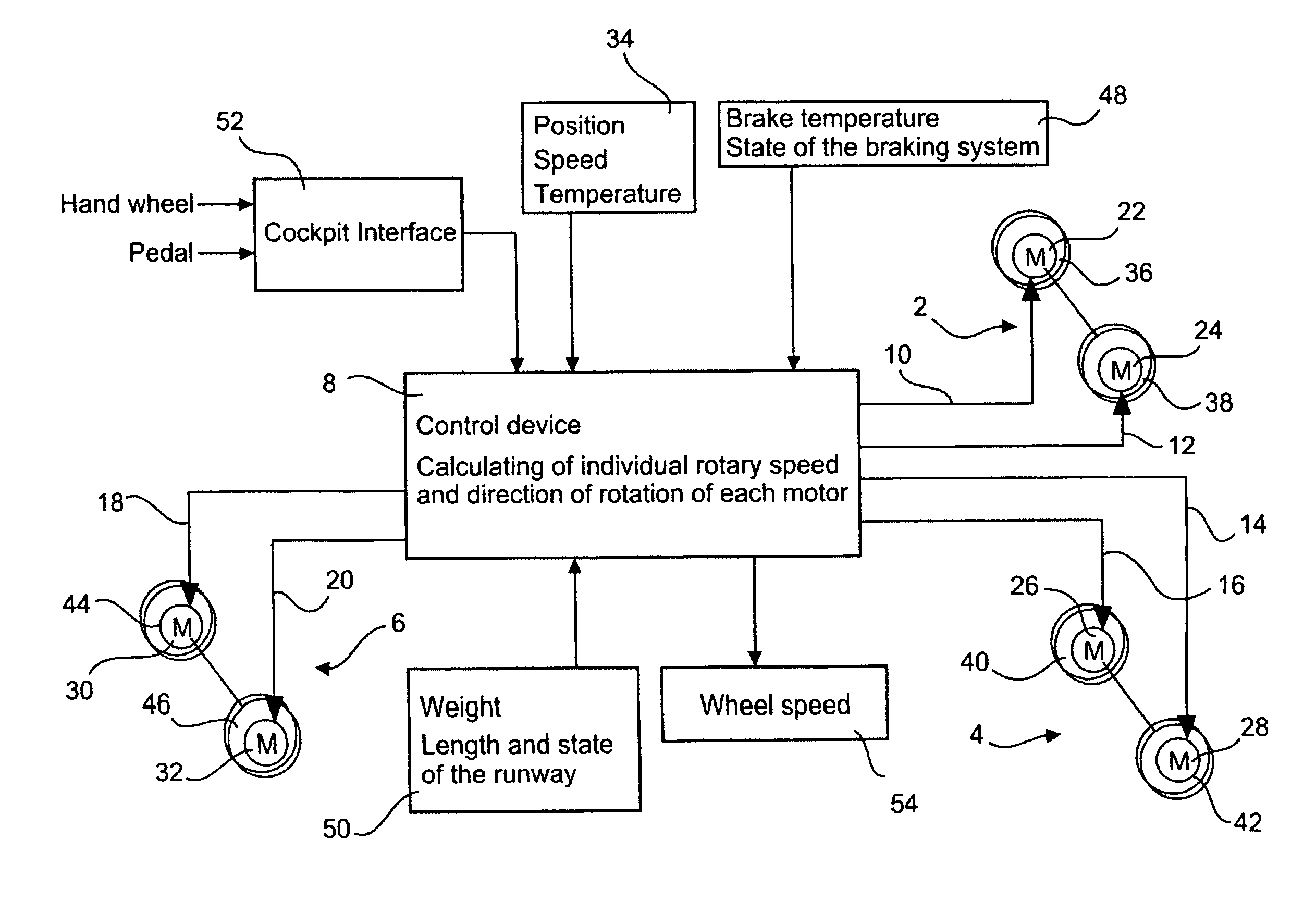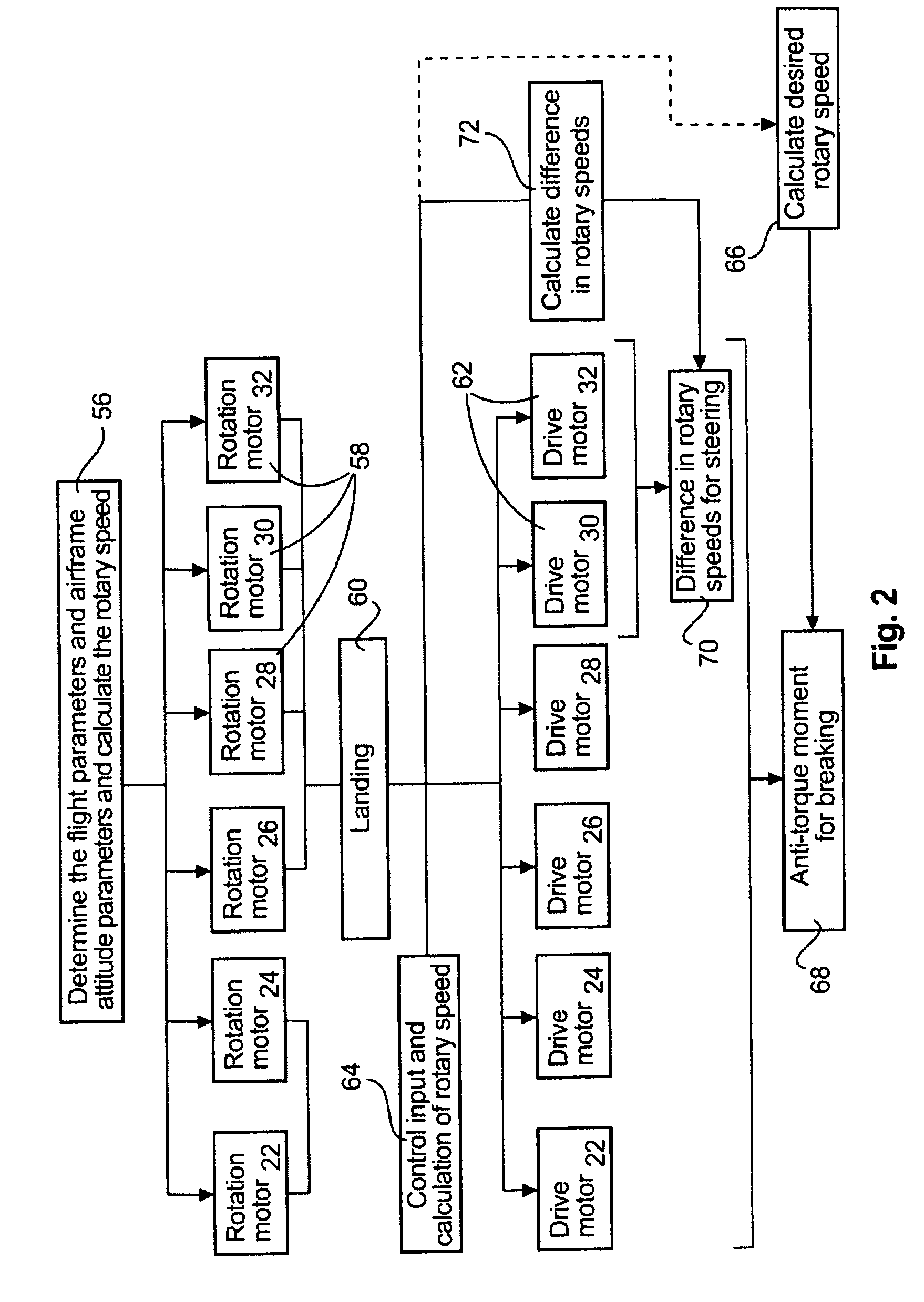Integrated multifunctional powered wheel system for aircraft
a multi-functional, powered wheel technology, applied in the direction of skis/runners, energy-saving operation measures, alighting gear, etc., can solve the problems of insufficient relief on the main braking system, inability to control the taxiing procedure entirely from the outside, and high additional weight in return for a relatively modest number of additional functions. , to achieve optimally boost the main undercarriage brake, the effect of improving the braking
- Summary
- Abstract
- Description
- Claims
- Application Information
AI Technical Summary
Benefits of technology
Problems solved by technology
Method used
Image
Examples
Embodiment Construction
[0019]The following description of FIG. 1 refers to the exemplary embodiment of a passenger aircraft that comprises a main undercarriage that is arranged in the region of the wing root, as well as a steerable nosewheel gear. Since FIG. 1 explains the powered wheel system according to the invention in an exemplary manner with reference to an example, the main undercarriage 2 comprises a pair 2 of wheels that are arranged side by side (right-hand side of the aircraft) and a pair 4 of wheels (left-hand side of the aircraft), as well as a pair 6 of wheels on the nosewheel gear. Of course any further embodiments may be implemented in which larger numbers of wheels or pairs of wheels or undercarriages are provided.
[0020]The core piece of the powered wheel system according to the invention is a control device 8 which in order to carry out its specific tasks consumes data from other aircraft systems and is equipped to emit signals 10 to 20 to motors 22 to 32, which signals cause the respect...
PUM
 Login to View More
Login to View More Abstract
Description
Claims
Application Information
 Login to View More
Login to View More - R&D
- Intellectual Property
- Life Sciences
- Materials
- Tech Scout
- Unparalleled Data Quality
- Higher Quality Content
- 60% Fewer Hallucinations
Browse by: Latest US Patents, China's latest patents, Technical Efficacy Thesaurus, Application Domain, Technology Topic, Popular Technical Reports.
© 2025 PatSnap. All rights reserved.Legal|Privacy policy|Modern Slavery Act Transparency Statement|Sitemap|About US| Contact US: help@patsnap.com



